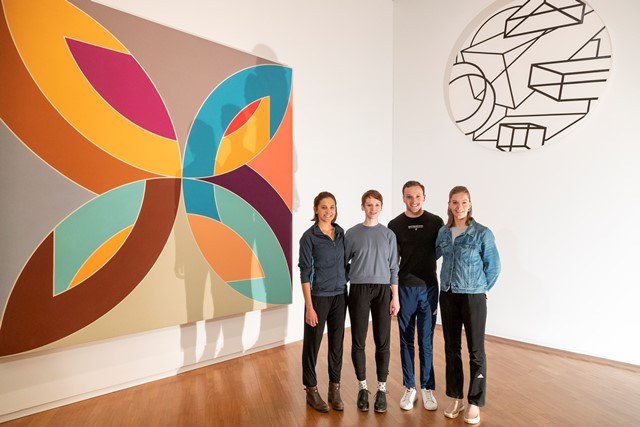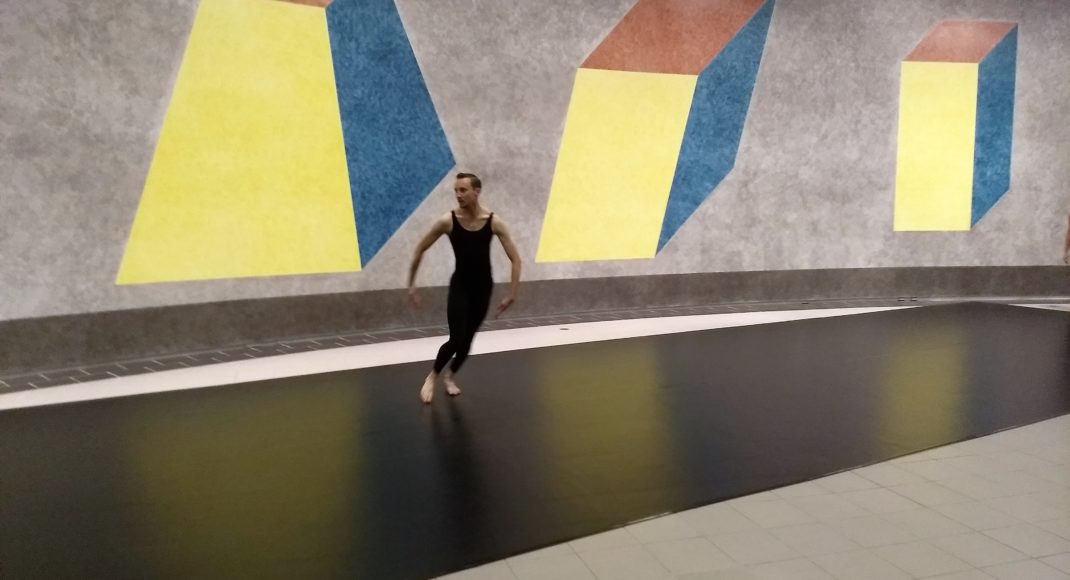The National Gallery of Australia, with support from the Embassy of the United States of America, has just finished hosting a dance residency in conjunction with its exhibition American Masters 1940–1980. Three dancers were selected to work with Jamie Scott, a former Cunningham dancer and now one of a number of such dancers charged with staging the Cunningham repertoire.

The residency also relates to the centenary of the birth of Cunningham, which occurs next year, 2019.
The first thing to say is the original brief specified that one dancer was to come from the ACT. Well this didn’t happen. I can’t believe that there was not one dancer in the ACT who could have been part of the program in some way. Who knows what might have happened? Merce had courage, took risks, and loved chance. Could not those running the residency have had more courage?
It was a shame too that there seemed to be no way of knowing what exactly the dancers were performing—part of the Cunningham repertoire, but what part(s)? People who watched the performances, but who perhaps came mainly to look at the art on show, may not have cared, but I think the dance community likes to know these things. I certainly do. And who was the musician who accompanied the performances. And what composition was he playing? An announcement, or a cast sheet was needed.
Nevertheless, the three dancers, who had worked with Scott for the time that they did (one week, two, not sure), danced beautifully. It was refreshing to see again the clarity of movement that emerges from the Cunningham technique—the juxtaposition of curves and straight lines, the tilt of bodies, a delicious jump with the leg in a low arabesque that reminded me of Cunningham’s 1958 work Summerspace, the unique partnering where body builds on body, tiny detailed movements of the shoulders or hands or feet, the changing balance of the body, and so on. Aspects of Cunningham technique sometimes look simple, deceptively so, but extraordinary control and strength are needed. The performance, which lasted around 40 minutes (with an abbreviated version performed at an evening event), resonated beautifully against the background of a Sol Le Witt wall drawing, whose apparently simple structure also has a deep, conceptual strength.
It was very disappointing, however, that reference to Cunningham did not appear in the exhibition itself. Why spend what must have been a large amount of money, along with major input from the US Embassy, on a dance residency and then have so little reference to the way in which the artists represented in the exhibition collaborated with Cunningham and his company? Nor, it seems, was there anything in the publication that accompanied the exhibition, apart from a reference to a video made by Nam June Paik with film maker Charles Atlas in 1978. The video, Merce by Merce by Paik, was in fact on show but not in the exhibition. It was on another floor of the Gallery, which I only discovered after asking several people where it was.
This residency was a lost opportunity, and media support was very poor. One expects at least to be given media images that are properly labelled, and to have the performing artists adequately recognised, their work documented, and that information made available to the public.
Michelle Potter, 16 September 2018
Featured image: Scott Elstermann in a moment from a performance by Cunningham Residency dancers. National Gallery of Australia, 2018. Private collection


One thought on “Merce Cunningham Residency. National Gallery of Australia”